See & Hear all of the music:
🕎 Hanukkah music and me…
When I was a kid, Hanukkah in our family was a bit non-traditional. Yes, we had presents for eight days, with the smallest one first and saving the largest one for day eight. But really the best bounty of presents came at Christmas. The American blended family, Levy style.
I do remember a pair of roller skates with metal wheels. They clamped onto your shoes and were awesome! Clattering down the pavement “Heeyy evverybbboddyyy!!!” That’s how we rolled in the mid 60s (that’s the 1960s for you youngsters out there)!
As we explore the selections in the book, you may ask, “why the cowboy hat in the videos?“ Good question! There are two reasons: one was to prevent glare off my shiny old noggin! Also since these are Hanukkah songs, a head covering is appropriate. And this is my nicest hat!
Here are some specifics on the six tunes:
1. Candle Blessings for Chanukah:
This traditional melody is accompanied by an Alberti bass pattern and features “Dunstable fourths” throughout. In measure 15 the melody moves to the left hand, with the right hand playing offbeat block triads to create a reggae style. The finale at measure 22 commences in unison – in the minor mode! Two bars later we return to the major mode mode for a big finish. The parallel thirds in the left hand are a bit technically challenging, but persist and you will succeed.
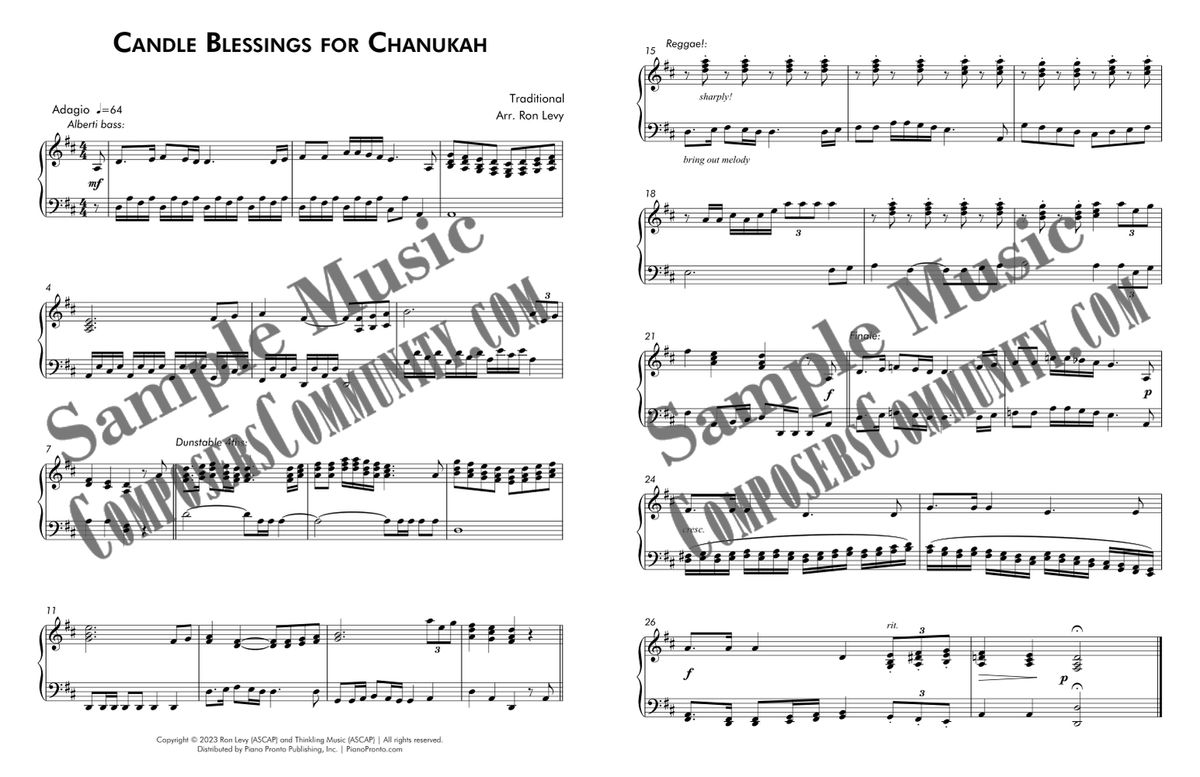
2. Rock of Ages:
The entire melody is played through twice, with slight differences on the second pass, mainly in the harmony. A hint of Copland in measures 21 and 22. Then at measure 26 a very sly modulation to C major, returning without fanfare to the original key of G in measure 34. The whole expresses a sense of calm and majestic grandeur.
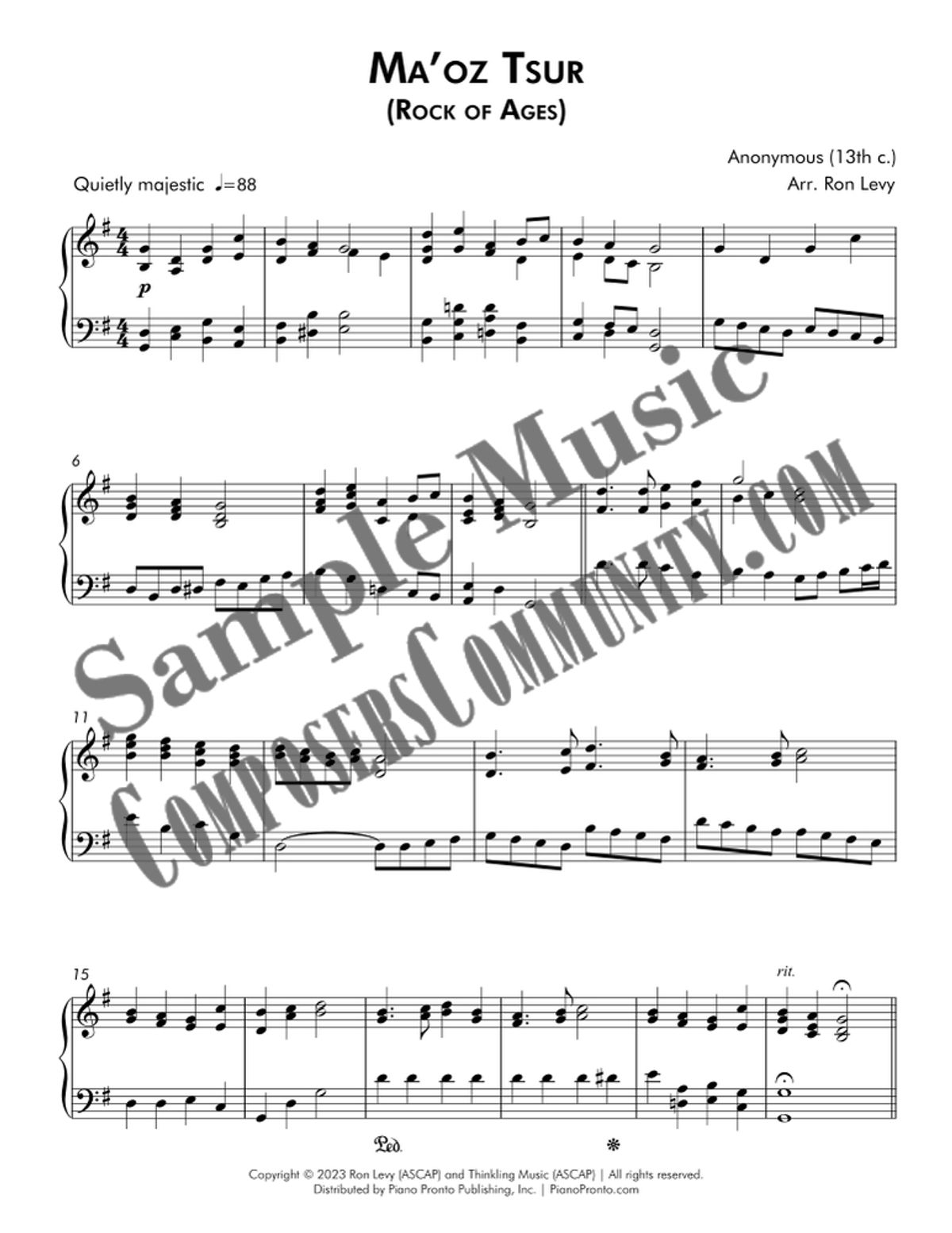
3. O Chanukah:
This is really a set of variations on the tune, with the melody alternating between right and left hand in various styles and textures. A show piece.
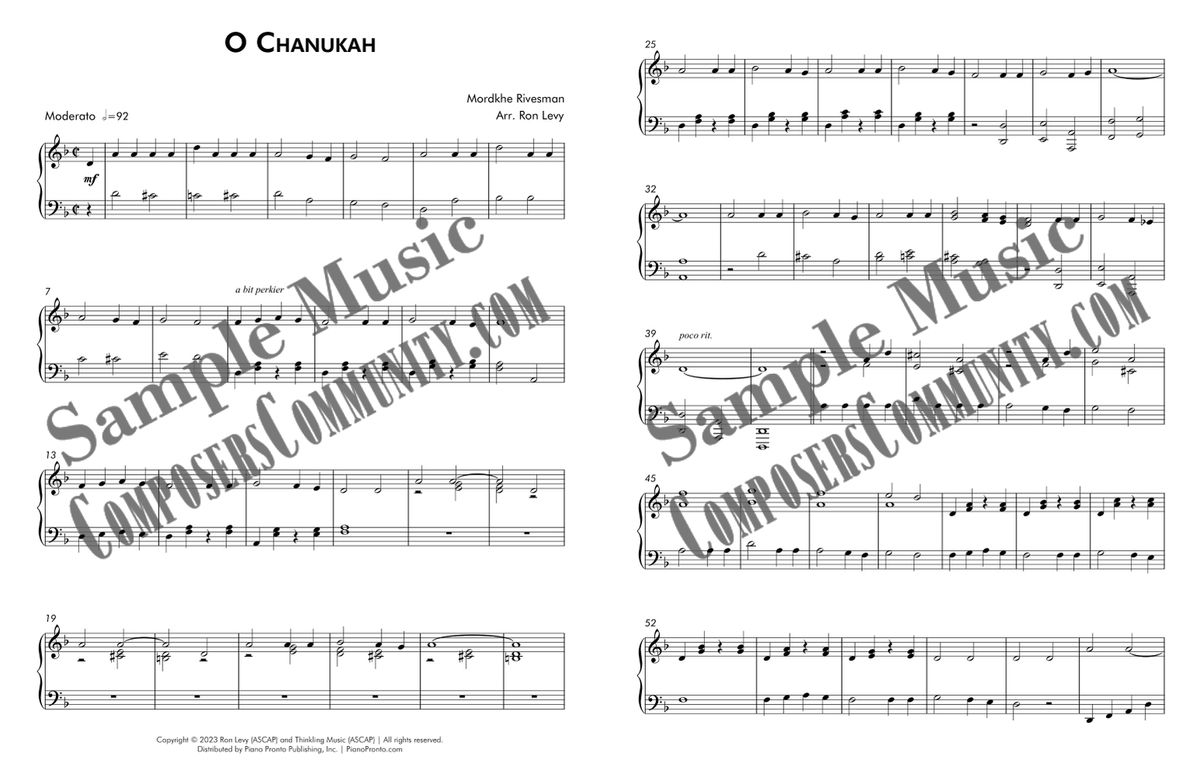
4. Chanukah:
This short ditty is quite playful with the little 16th note fragments and some canonic phrases. Again the melody moves into the lower register (at measure nine). I just love that “baritone” register for melody!
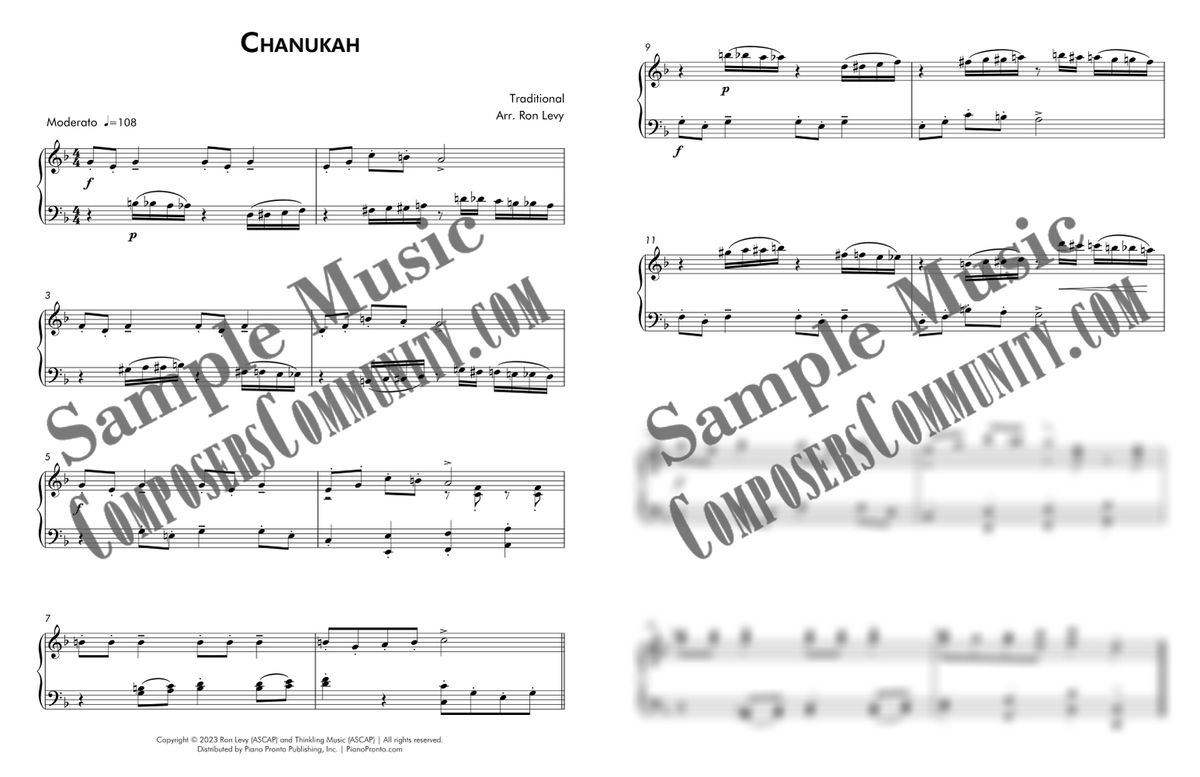
5. Dreidel Variations:
Again with the variation form! The opening is Lisztian, with mini cadenzas acting as a sort of commentary on the interrupted melody fragments. The mood turns cheerful at Measure 14, and in Measure 18 the real fun begins with a sly quote of Mozart’s Sonata in C in the left hand. Another quote occurs starting in Measure 36: the jazz standard “Chicago.“ Your listeners might not hear it unless you point it out!
At measure 54 a darkish circus atmosphere is invoked with the minor mode and a chromatic figure in the left hand. We love minor. And we adore chromatic! The closing section starting at measure 70 probably should be ten times longer because it’s just so pretty. Kind of like bells. Bells!
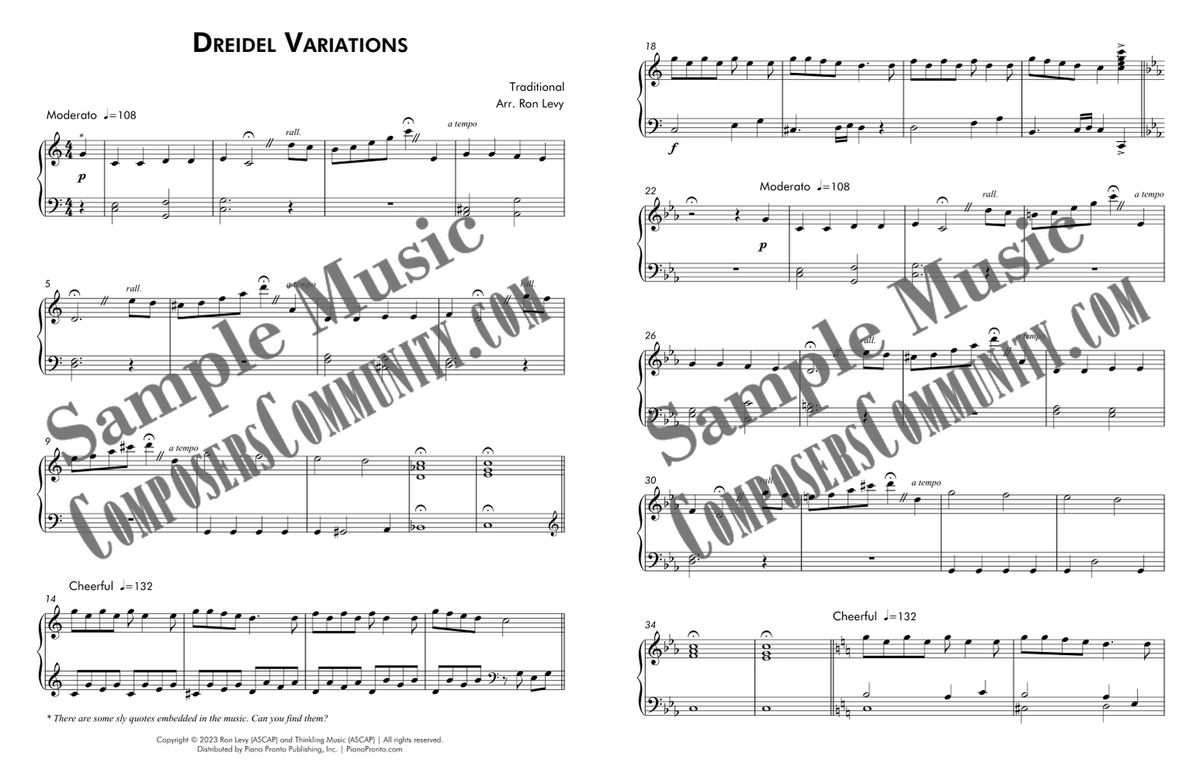
6. Brahms’ Dreidel Song:
We called it this because the opening is very reminiscent of one of Brahms’ piano pieces, Op. 116 number 2. Pathos galore. But true dreidel fun begins at measure 9. Because, oom-pah! And we love oom-pah! A sudden cessation of activity in measure 55 signals a musical pause at a very slow tempo; again dramatic! But dancey oompah resumes at measure 64, and all is well. (And Brahms did love his oom-pah)!
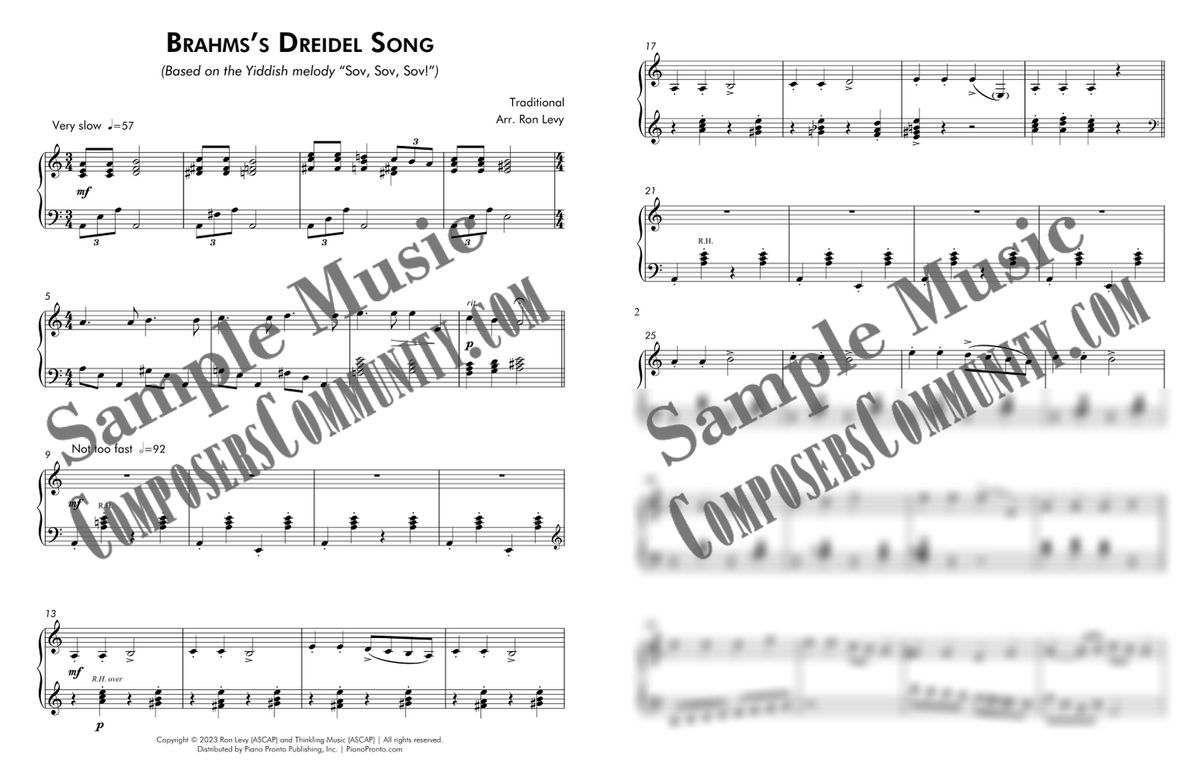

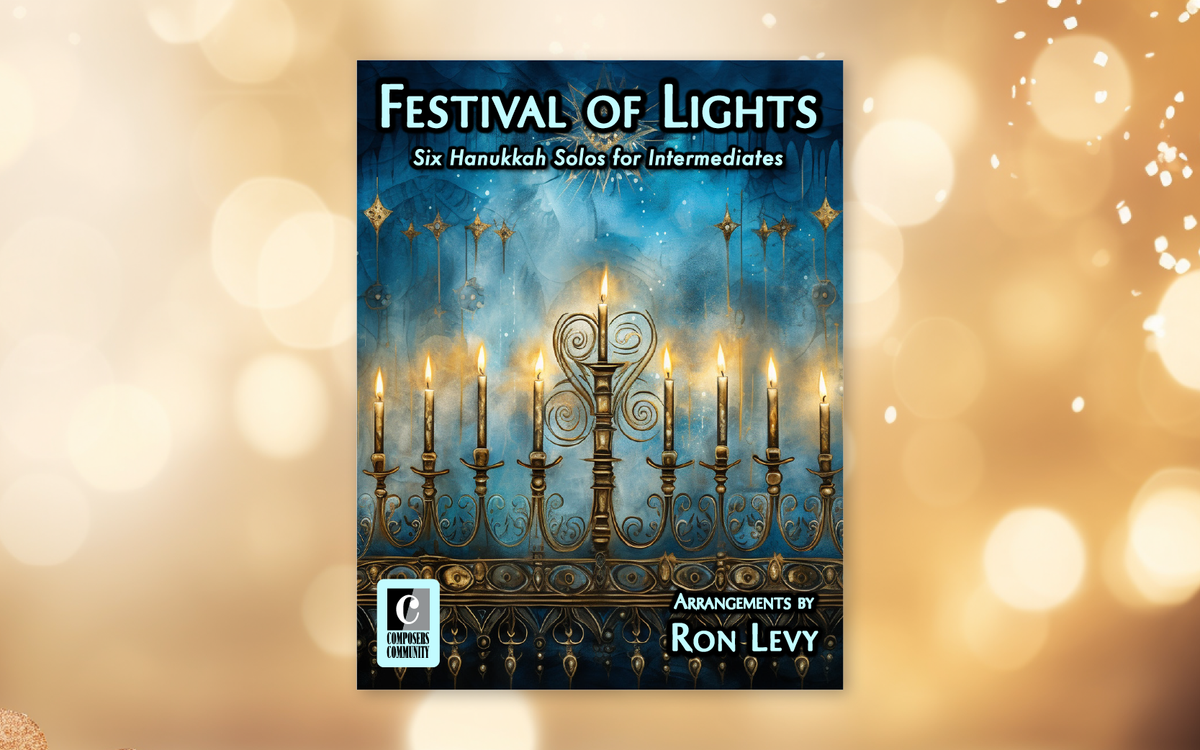
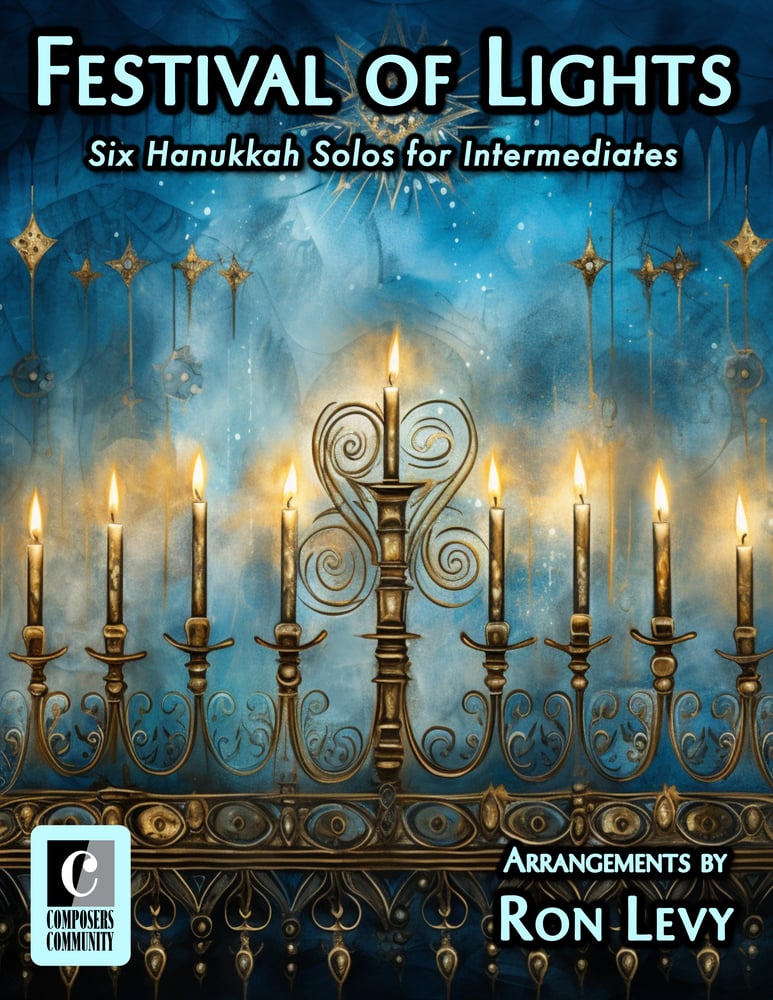
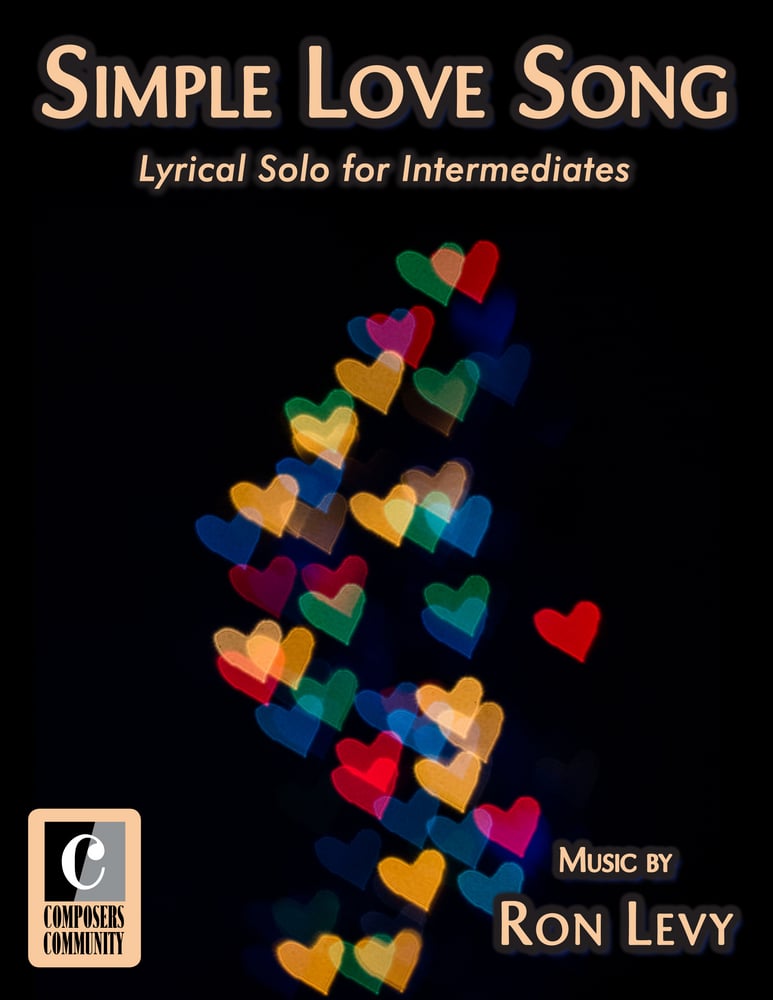
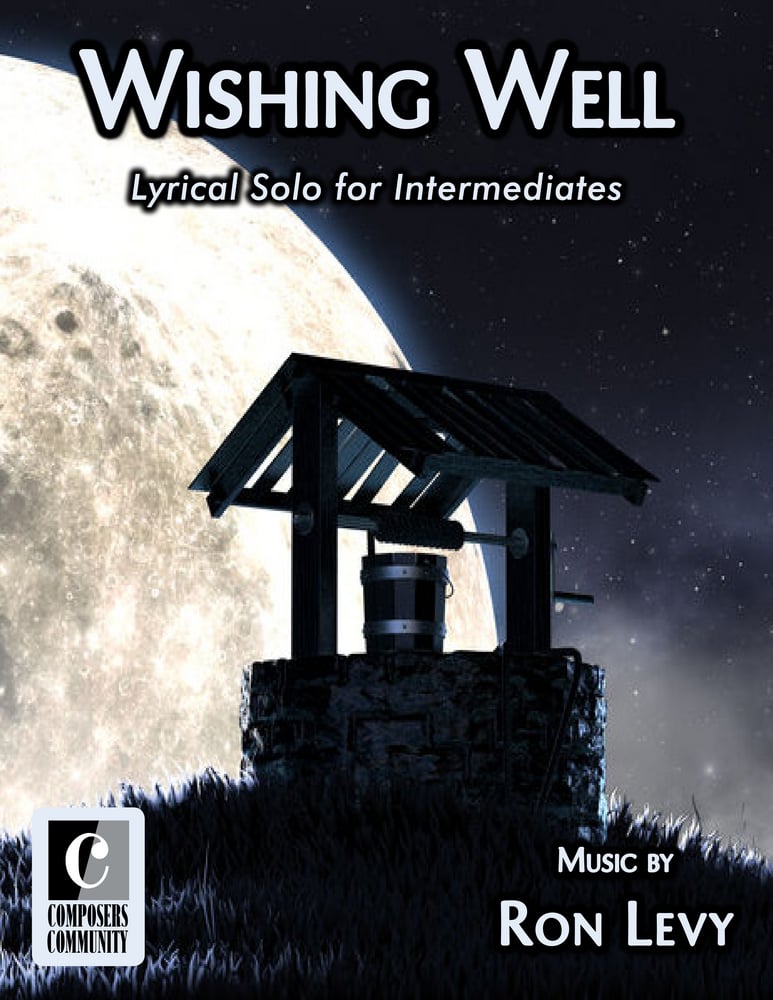
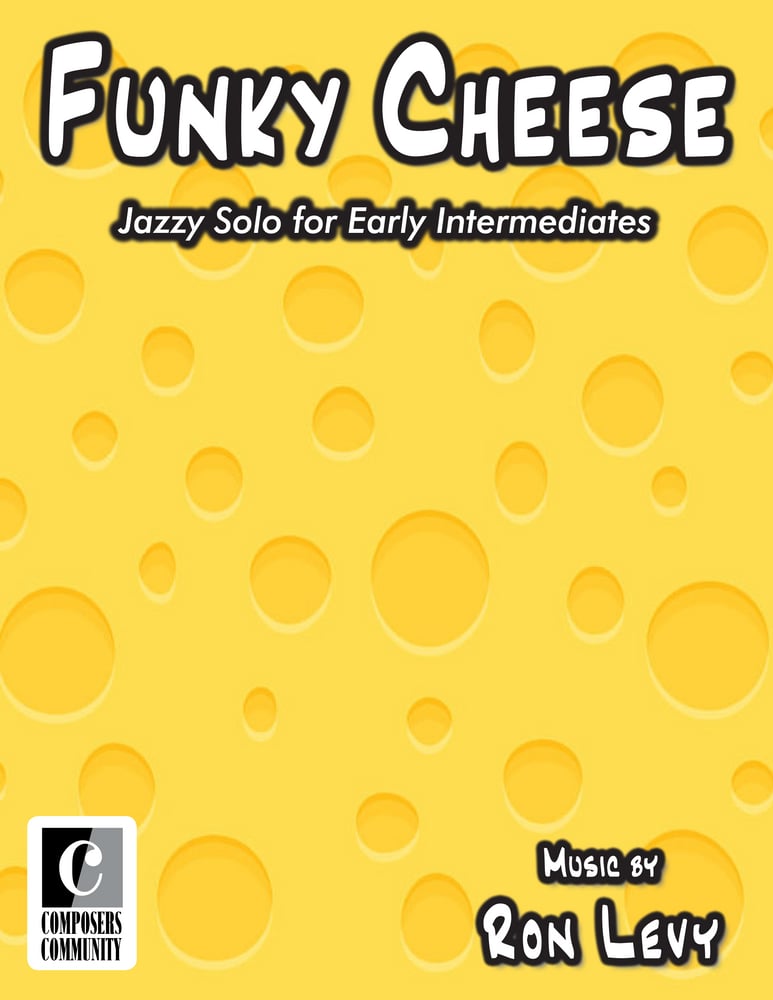
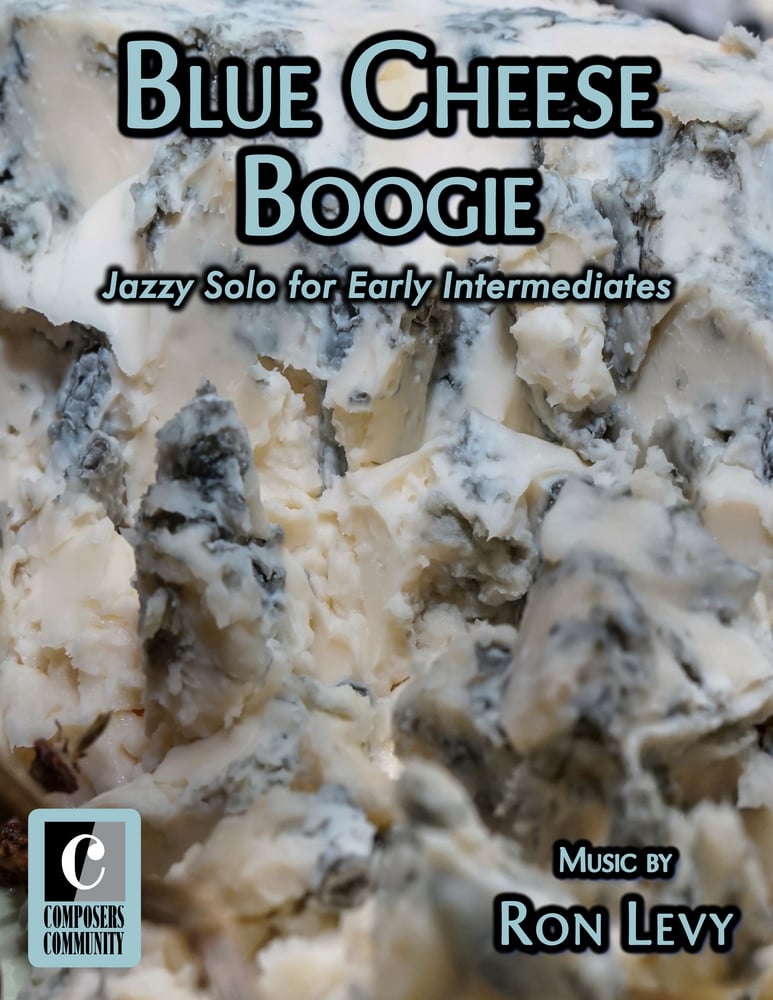
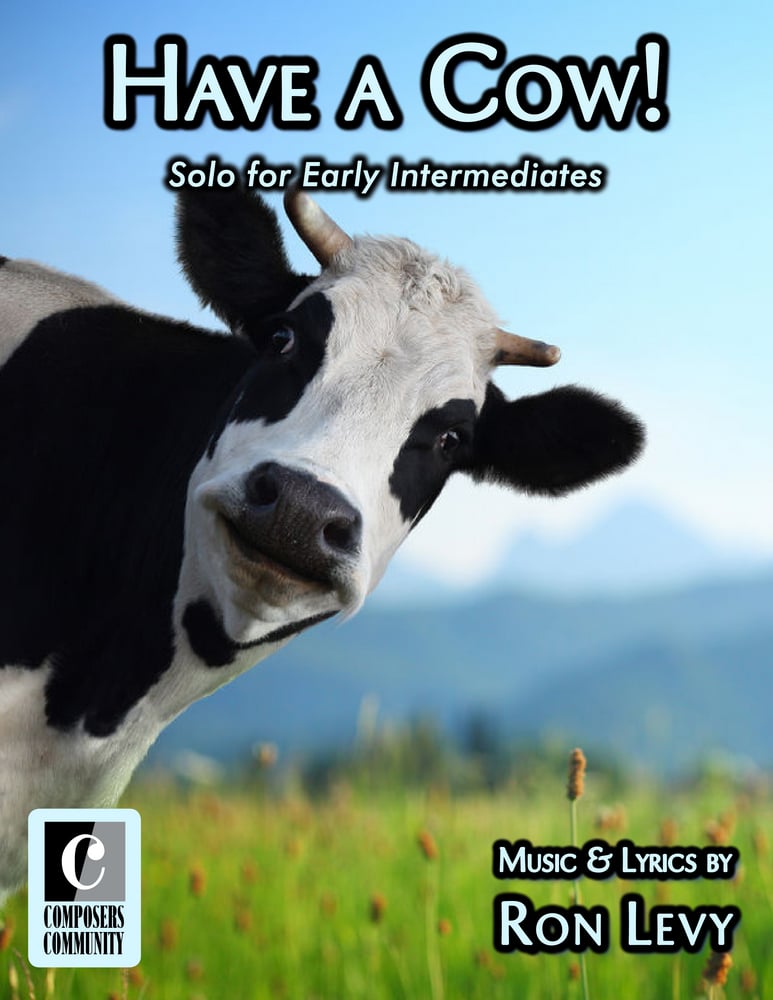


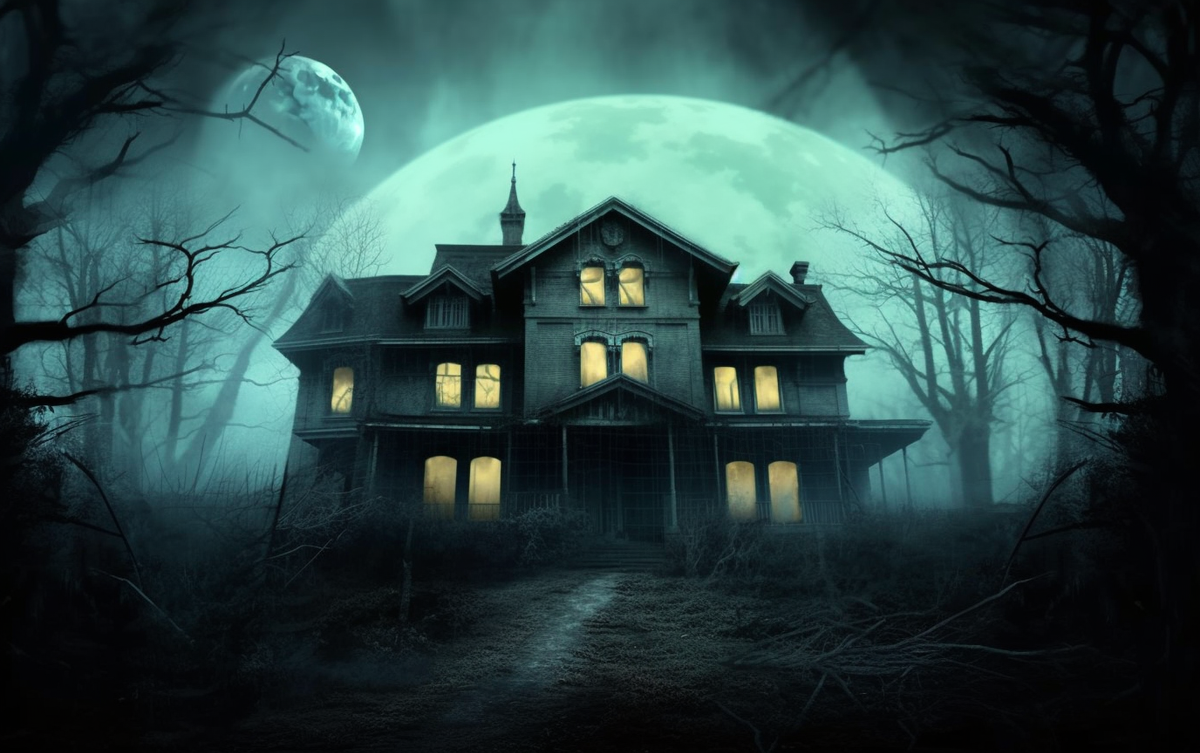

Be the first to comment.